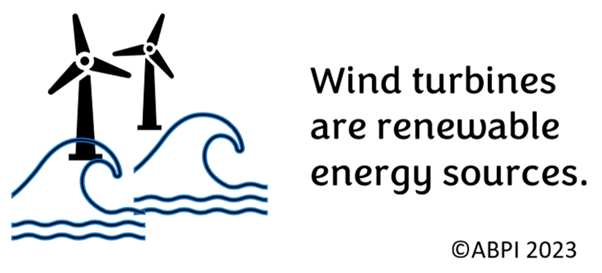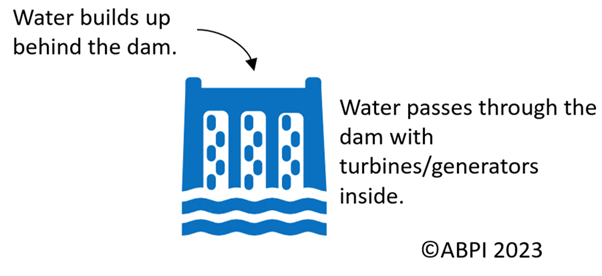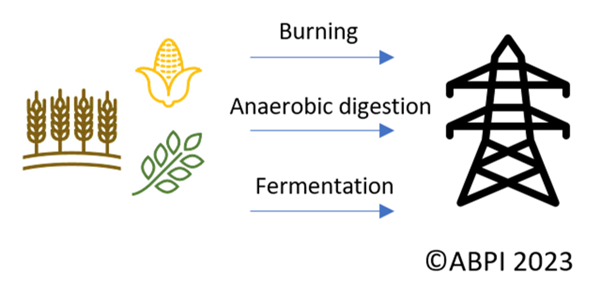This topic takes on average 90 minutes to read.
There are a number of interactive features in this resource:
 Physics
Physics
 Science
Science
Wind energy:
Wind farms are built in exposed areas of land where there will be lots of wind to power them. This is often in the sea.
Wind turbines transfer kinetic energy into electrical energy via generators inside the turbines themselves. The wind allows the movement of the blades, which then allows the generator to turn. The generator then transfers kinetic energy into electrical energy.
Despite wind energy being better for the planet, some people object to windfarms as they feel that they do not provide a nice view. They can also be quite noisy and are not effective if there is no wind.

Solar energy:
Solar energy is generated by transferring energy from the Sun into electrical energy.
The energy from the Sun comes from nuclear fusion, which is opposite to nuclear fission. Nuclear fusion occurs inside the Sun and hydrogen protons combine to form helium (or any other small atomic nuclei can fuse to make a heavier one). This releases a large amount of energy.
As with wind energy though, this can only work if the source is present. In this case, the source is sunlight, meaning that solar power cannot be generated at night.
The solar cells are black since darker colours are more efficient at absorbing light.

Hydroelectricity:
Dams are used to trap water for the generation of hydroelectricity. The dams are usually high up, as the height of the water increases the gravitational potential energy.
When the water is released, it passes through turbines and a generator to transfer energy to electrical energy.
Though this is clean as it does not produce greenhouse gas emissions, large areas of land need to be destroyed to build the dams which means that habitats are lost.
However, unlike the solar and wind options, hydroelectricity is more reliable since the water is always available (unless the area is experiencing a drought).

Waves:
The up and down movement of the waves allows the movement of devices in the ocean. These devices are connected to generators, which transfer the energy to electrical energy.
Like wind turbines, this system relies on the wind as the wind powers the waves.
There is no pollution though, and the energy will never run out.
Tides:
Tides occur due to the gravitational pull of the Moon and the Sun.
Like with hydroelectricity, dams can be built to generate tidal power. Dams (or tidal barrages) are built in river estuaries and as the tide comes in, the dam fills. The water is then released through the tidal barrages which have turbines in them, powering the movement of the turbines.
These turbines are connected to generators, allowing the transfer to electrical energy.
This is a reliable source since there will always be changes in tides.
However, building the dams and barrages can be harmful to habitats.
Geothermal:
Geothermal energy comes from heat underground. This heat comes from the natural radioactive decay of minerals (such as uranium).
Water is pumped down to the heat underground, and it condenses to form steam. The steam then powers the movement of turbines, which powers the generator.
This is reliable as it doesn’t rely on conditions such as wind or light, but it is very expensive to implement.
Biomass:
To generate electricity using biomass, organic matter is used. This includes crops, waste, or landfill, as examples.
Often the materials are burned to release heat energy. Like when fossil fuels are burned, this can drive turbines to transfer the heat energy to electrical energy.
However, burning the materials releases CO2. As long as plants are replanted at the same rate that they are burned, this will be carbon neutral as the intake of CO2 via photosynthesis will act as a balance.
The materials can also be fermented or anaerobically digested too, to form biofuel or biogas. This produces ethanol or methane.

Due to the implications of global warming and climate change, renewable sources are now being used much more frequently. This is allowing companies to move toward their net zero goals and support the Paris Agreement.